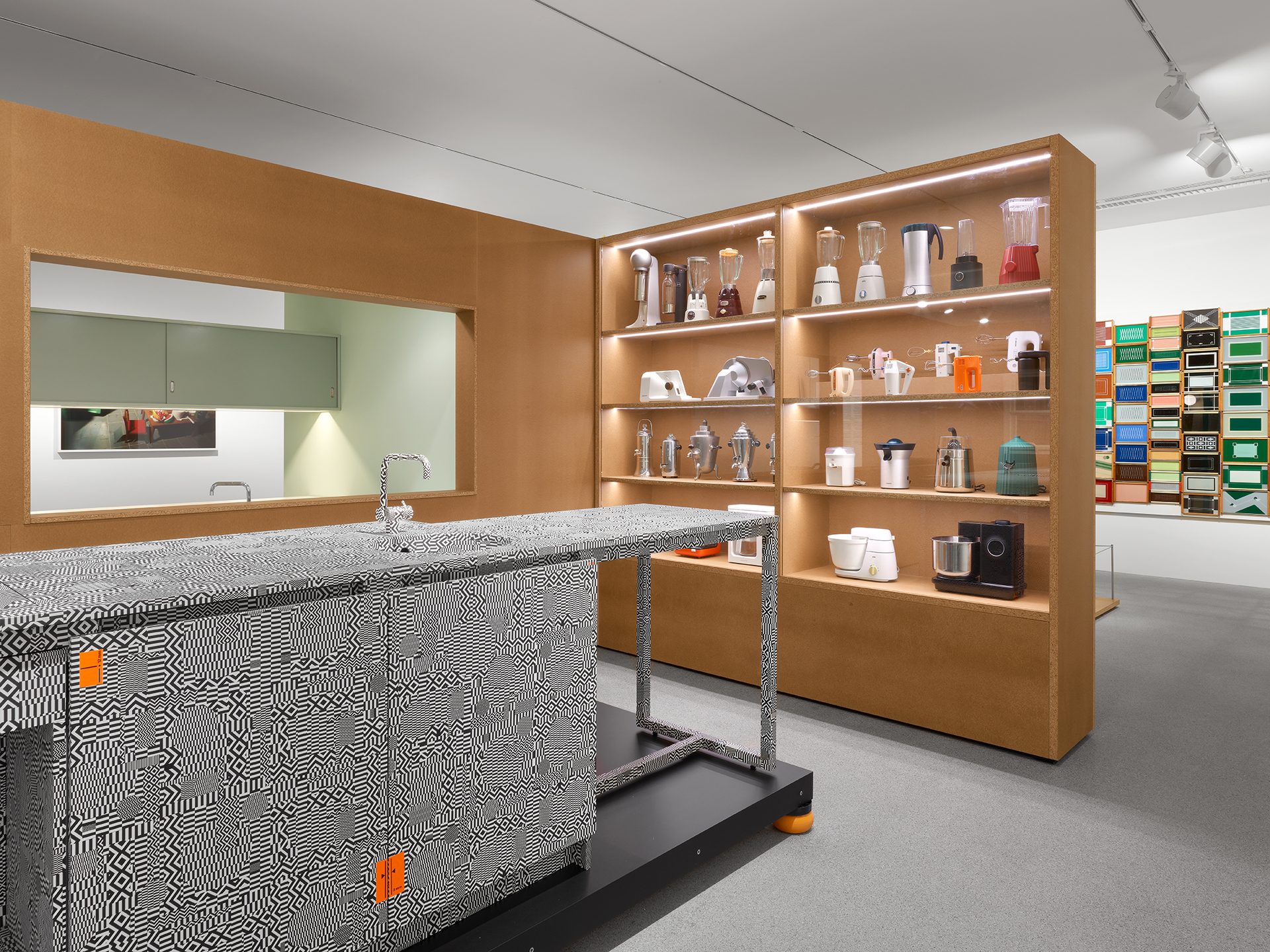Kitchen Culture
About the Exhibition
Just short of a century lies between the first fitted kitchen and the personally configured kitchen of today. In the course of that long period, designers and architects developed countless new solutions and responded to changes in technology and society.
The spectrum ranges from the simple cooking niche to the kitchen
as the communicative heart of the home. It starts with the Frankfurt
Kitchen (1926) by Margarete Schütte-Lihotzky. The first so-called
fitted kitchen developed for around 10,000 apartments was intended
to make the household as efficient as possible for working women.
Prominent examples from the post-War period show how important
the kitchen was in Functionalist architecture: The kitchen unit for the
Unité d‘habitation residential tower block in Marseille (1946–1952)
by Le Corbusier, Charlotte Perriand and André Wogenscky with
around 330 apartments or the kitchen designed by Arne Jacobsen
for a detached house of the 1957 International Building Exhibition in
Berlin as a central space of the bungalow.
The serial kitchen moduls Eschebach K21 (1956) created by VEB
Küchenmöbel Radeberg was highly successful thanks to its array of
different uses and color spectrum in East Germany and the Soviet
Union.
Stefan Wewerka‘s Kitchen Tree (1984) and the Coffee Tree (1984)
by the Kunstflug group represent new or ironic approaches.
The example of the workbench (1988) by Bulthaup takes
up the idea of the modern cooking island, which finds its latest
expression in the kitchen unit Erlkönig (2020/2021) masterminded
by J*Gast.
The look at kitchen culture is complemented by a selection of
electric houshold appliances from the 1950s onwards that
characterize everyday life in the kitchen. A wall installation of
around 300 trays from the Ludmila and Rolf Podlasly collection
show popular GDR design by the Rufra – Wasungen company.
The exhibition architecture designed by OHA, Munich, consciously
takes particle board as its basic material: Almost all industrially
manufactured fitted kitchens are made of it today. Overall, the show
offers insights into and outlooks for the world of designed kitchens.
Plan a visit
Where?
-
Barer Straße 40, 80333 Munich
Opening hours:
-
Daily 10:00 – 18:00
-
Monday closed
-
Thursday 10:00 – 20:00






FAQs
-
Curated by:
Xenia Riemann-Tyroller, Josef Straßer
-
Sponsored by:
PIN. Freunde der Pinakothek der Moderne e.V.
